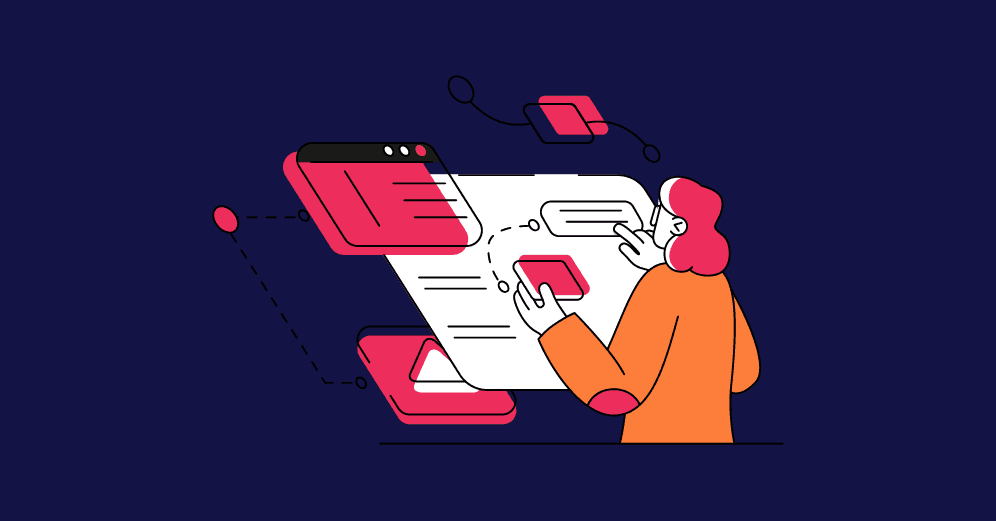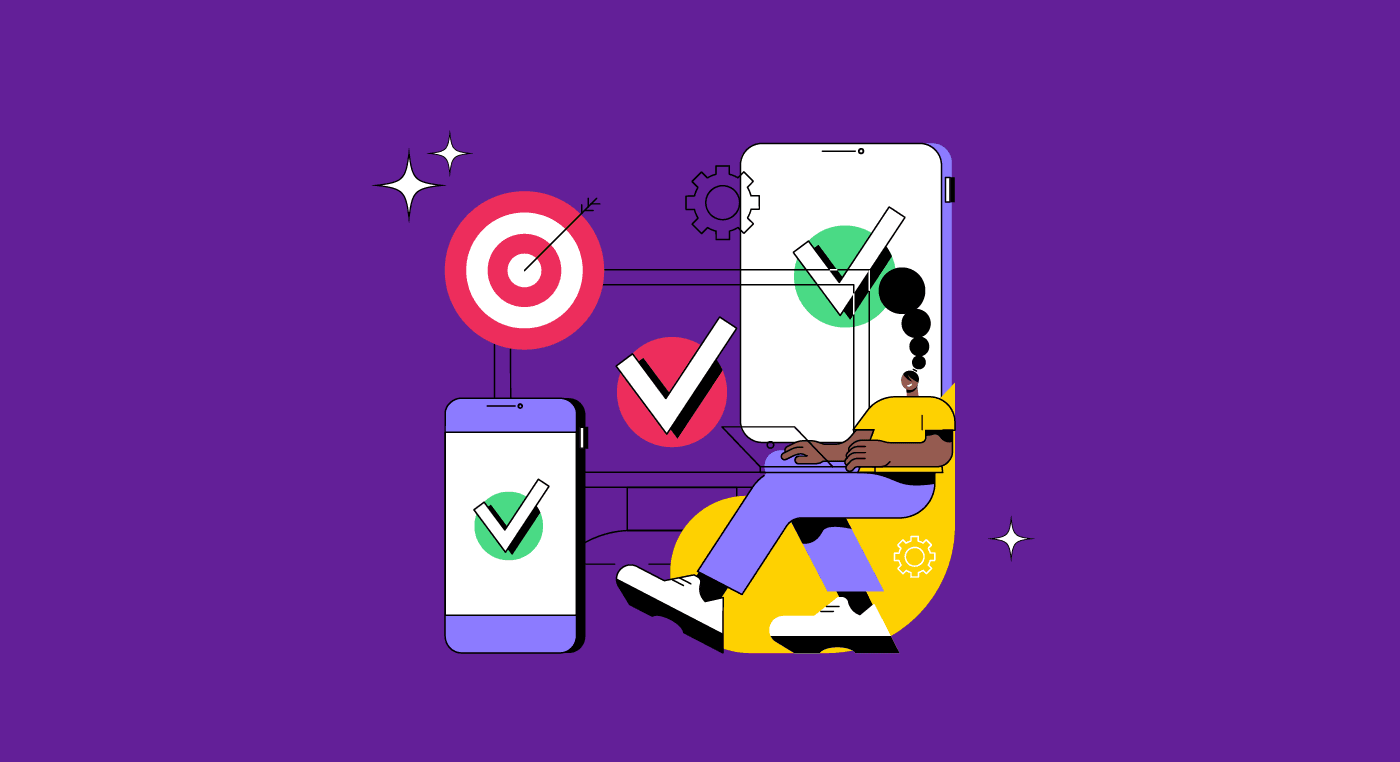Empathy is in our everyday conversations, whether we talk about politics, social agenda, a friend who's passing through a difficult situation, or even in a job interview.
As soon as the word empathy comes into discussion, the following expression is embedded in our minds:
"Empathy is putting yourself in someone else's shoes."
But can we really compress such a complex value into a simple and single sentence like this? Or are there other issues to be taken into consideration?
In this article, we will delve into this matter and show how it strongly relates to UX Design. Plus, there are a few tips on how you can better manage empathy in your projects!
What is empathy?
Empathy has become a buzzword and a soft skill that we look for in others. We want empathic coworkers, partners, friends, and kids.
By dictionary definitions, empathy is the ability to understand and share the feelings of another person.
Researchers define empathy as the ability to sense other people's emotions, coupled with the ability to imagine what someone else might be thinking or feeling.
Thus, this concept tries to humanize our relationships and see things from another person's point of view. In a world of so many differences, be it cultural, race, gender, age, disabilities, or wealth, it's easy to understand why empathy has gained so much interest.
For a deeper understanding, neuroscience has been studying empathy for a long time and has some interesting findings:
- empathy is an ability learned through evolution;
- some people don't have it. Psychopaths, for example;
- it is automatic and contagious. In other words, we can "catch" someone's misery;
- cultures, beliefs, and education drive the way we express it;
- it has bias. We have more empathy for our friends and loved ones;
- we can consciously turn it on and off;
- it is triggered mainly by negativity.
Empathy can be complex and is discussed by different groups in society, from politicians to UX Designers.
Why should UX Designers care about empathy?
UX Design brings a whole new perception of how products must be developed, having User-Centered Design as one of its foundations.
To apply a UCD approach, designers must know their users well. But it goes further: they are the ones who fight for users' best interests. They also have to help their teammates and stakeholders understand the users and their needs.
Since UX Design is about developing products that solve user needs and provide a better experience for them, it makes sense that empathy would be crucial to innovating and developing better products.
Designers need to put themselves in the place of their users to comprehend their pain and be able to develop products that will meet their needs.
Empathy and sympathy are different things
One of the most common mistakes we make is confusing empathy with sympathy. So let's explain it:
Sympathy is recognizing someone's pain or need. In other words, sympathy is a reaction to people's suffering and is usually related to pity.
Although sympathy seems quite the same as empathy, there is a fundamental difference between them.
While sympathy recognizes a user's need, empathy makes us imagine and actually feel how uncomfortable those problems can be.
In that regard, sympathy can make designers be nice to users, while empathy empowers them.
For example, a blind user is interacting with a particular interface. Sympathy makes us recognize the need: "That user will struggle to understand the graphic content of that interface."
Empathy will make designers cover their eyes and try to interact with the interface in that same situation. In doing this, designers will truly experience failure and frustration, as would a blind user.
Therefore, empathy brings designers closer to the user's reality and makes them develop better solutions so that users can have more autonomy and empowerment.
The spectrum of empathy
As we could see, sympathy and empathy are related, yet there are fundamental differences between them.
However, it is impossible to determine boundaries that clearly define where sympathy ends and where empathy begins.
What we can analyze is the Spectrum of Empathy, which show us variations of concepts, including sympathy and empathy.
Observe below the graphic representation of the Spectrum by Nielsen and Norman Group:

The four stages of the spectrum are:
- Pity;
- Sympathy;
- Empathy;
- Compassion.
Pity and sympathy require less effort to manifest themselves; accordingly, their impact on solving users' needs is lower.
Empathy and compassion are on the other side of the spectrum, which require more effort to manifest and can truly solve users' problems.
Through compassion, we can fully understand a user's feelings and have a genuine wish to resolve problems and needs. Empathy leads to compassion.
Accordingly, some people say that compassion is the actual concept that drives UX Design decisions because:
- it's focused on problem solutions;
- it has no bias (when done right);
- it's positive;
- it uses the best of empathy.
Despite studying these concepts separately, keep in mind that compassion needs empathy so it can exist.
The spectrum offers a visual representation of the stages embraced in the process of empathy.
Reading tip: Double Diamond To Help Define What The Real Problem Is
The dark side of the empathy
Life is not a bed of roses, and, unfortunately, the same goes for empathy. Be careful not to run into a pitfall while raising empathy.
Letting emotions run wildly can create a lot of stress and anxiety in UX Designers, and instead of helping the user, you might harm yourself in the way.
This happens when we can't turn compassion into actions; empathy overload then leads to stress, anxiety, or even burnout.
So it is crucial to be careful when delving into users' needs and pains. The research must be controlled and focused on creating solutions for problems while being aware of your own limitations.
Designers must understand that they can't always fix every user problem, so stick to those issues that are within your reach.
Tips to develop empathy in UX Design

1) Use qualitative research
Qualitative research is a good way to practice and increase empathy as a UX Design tool. So, designers can try using:
- interviews;
- cognitive maps;
- diary studies.
These methodologies can map and identify users' behaviors, motivations, and needs.
In addition, use open questions in your surveys and ask for more detailed explanations and answers.
This deep dive is crucial to identify mental models that will help plan strategies and problem solutions.
Reading tip: Desk Research – How To Conduct Secondary Research Efficiently
2) Diversity and inclusion
Don't lose sight of those users with disabilities. They are crucial for designers to measure the usability of an interface.
This way, open your observation study and begin to understand the needs of every user, with and without disabilities.
Thus, interviewing and staying close to diversity is a good way to increase empathy in UX Design.
3) Ask stakeholders to observe user testing
When trying to raise empathy, we can use that saying: Seeing is believing.
Visualization can be much more assertive in convincing others than writing reports – although one doesn't exclude the other.
Thus, ask stakeholders to observe user testing. Witnessing users' needs and their challenges increases our empathy for them.
If it's not possible to promote a live session, you can record the test and then present it to stakeholders.
4) Build an empathy map
Empathy maps are a great way to understand users and prioritize their needs because they help us build empathy with our target audience.
The maps are split into four quadrants:
- says;
- thinks;
- does;
- feels.
Each quadrant is the result of observation and research. If you can't fill a quadrant, there's important information missing from user research.
5) Say yes to diversity

Assembling a diverse team is one of the best ways to build empathy.
Working with different people allows us to appreciate different perspectives, behaviors, and experiences.
Nothing is better for fostering empathy than promoting diversity inside the company and teams.
6) Write policies and guidelines that take empathy into consideration
Turn concepts into policies and guidelines for the company and design teams to follow. These documents drive internal processes and make it official that people care about empathy. Have the policy to promote diversity in your team.
These processes and actions will make empathy a consistent practice and promote it even more. Empathy and UX Design need to work together to develop products that solve user needs.
Moreover, working with empathy is not easy. It requires training and mindset changes. Finally, and most important, compassion is for life. Be more empathetic to change people's lives and not just improve the company's results.








